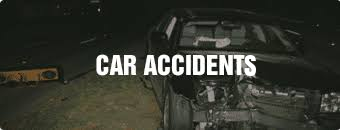- Our Firm
- Personal Injury
-
-
-
Personal Injury Lawyers
-
-
-
-
-
-
Injured in an accident? At Diamond & Diamond, our team of lawyers rely on their reputation in the field and extensive experience in personal injury to provide clients with a dedicated support system over the duration of their case.
-
-
-
-
-
HAVE YOU RECENTLY BEEN INJURED IN AN ACCIDENT?
-
-
-
- Corporate
- Class Action

Understanding Acquired Brain Injury and Its Consequences
#AskZevBergman
Acquired brain injury is not something you hear or read about, but it afflicts more than 1.5 million people in Canada. Half of the 160,000 brain injuries suffered each year are the result of motor vehicle accidents and falls. ABI is responsible more disabilities in children and adults than any other cause. Preventing brain injuries requires an understanding of how occur and the extent of the damage they can cause.
What is acquired brain injury?
An acquired brain injury is defined as any damage to the brain occurring after birth and not the result of a congenital or a degenerative disease. Traumatic brain injury (TBI) is an ABI resulting from some form of trauma to the brain. Common causes of TBI include the following:
- Motor vehicle accidents
- Brain surgery
- Sports injuries
- Falls
- Assaultive conduct
- Gunshot wounds
An ABI can also be the result of circumstances other than trauma, including the following:
- Tumor
- Stroke
- Heart attack
- Lack of oxygen
- Carbon monoxide poisoning
- Seizure
- Exposure to toxic substances
- Substance abuse
Dementia and Alzheimer’s disease are classified as acquired brain injuries because they would fall into the category of degenerative or congenital diseases.
Is a concussion categorized as an ABI?
A concussion is a form of TBI caused by any trauma to the head or body that causes the brain to move within the skull. It is this movement that causes the damage to the brain. Prompt diagnosis is essential because not allowing the brain to heal can cause more harm.
Sports-related concussions are a growing concern in Canada. Government statistics show that 39 percent of children between 10 and 18 years of age who sought treatment in emergency departments of hospitals for injuries suffered in sports were diagnosed with concussions.
Depending upon the severity of the concussion, some of the effects on the victim include the following:
- Loss of consciousness
- Nausea
- Impaired memory or concentration
- Headache
- Irritability
- Amnesia
- Impaired vision
- Balance impairment
Concussions are difficult to diagnose because there might not be any noticeable signs of trauma, such as a bruise or laceration. For example, the sudden stopping of a car in a collision can cause an occupant’s head to violently move. This motion can cause the brain to move about within the skull. A concussion may not be visible on an X-ray, CT scan or MRI, so diagnosis depends upon doctors observing and evaluating the victim to identify signs of a concussion.
Consequences of ABI
ABI may affect multiple portions of the brain, so the how it affects a person can vary greatly from one victim to another and can range from moderate to severe. The severity of the ABI generally determines the extent of the consequences associated with it.
A person suffering from an ABI may experience physical, psychosocial and cognitive consequences. It is estimated that 10 percent of brain injuries are moderate and another 10 percent are severe. Concussions are the least severe form of ABI.
Cognitive impairment resulting from an ABI may include difficulty recalling learned material, impaired problem solving and slowed speech. Physical limitations may include anything from temporary or permanent difficulty walking to paralysis.
Individuals suffering the effects of an ABI may exhibit signs of depression and have difficulty relating to other people in social or family settings. This can make it difficult for members of the victim’s family who must learn how to deal with the changed behaviour of a loved one.
Ontario personal injury lawyers
The personal injury lawyers at Diamond and Diamond have years of experience successfully handling claims for compensation for individuals suffering acquired brain injuries due to the negligent conduct of another party. If you or a loved one has been injured, call their 24/7 injury hotline at 1-800-567-HURT or visit their website to speak to someone now. They offer free consultations and case evaluations to injury victims throughout Ontario.
Need a Lawyer?
We are here 24/7 to address your case. You can speak with a lawyer to request a consultation.
1-800-567-HURTGet started with a free consultation
OUR TEAM
- Ishmeet Sandhu
- Nolan Bachmann
- Annamarie Demaj
- Jeffrey Hum
- Tofunmi Adeyeye
- Alessia De Gasperis
- Amandeep Chawla
- Jeremy Tsoi
- Kimiya Razin
- Shir Zisckind
- Gray Sinden
- Shelly Bard
- Christian Brown
- Daly Canie
- Tanveer Sohal
- Prianka Virdi
- Noah Brownstone
- Justin Kaminker
- Harinder S. Bhatti
- Craig Yargeau
- Kiran Birk
- Amit Singh
- Andrei Teju
- Maria Zahid
- Matthew Douglas
- Jacob Elyk
- Harry Gill
- Kristina Olivo
- Egi Bano
- Cam Woolley
- Charles Thompson
- Alexandra McCallum
- John Sime
- Allan Cocunato
- Patrick Poupore
- Erika Henderson
- Marina Korshunova
- Brandon Handelman
- Regeena Alapat
- Ryna Kim
- Natalia Poliakova
- Isaac Zisckind
- Manpreet Bhogal
- Mathura Santhirasegaram
- Nikolai Singh
- Sandra Zisckind
- Jeremy Diamond
- Michael Blois
- Darryl Singer
- Nadia Condotta
- Tinashe Madzingo
- Megan Armstrong
- Veronica D’Angelo
- Corey J. Sax
- Scott Tottle
- Steven Wilder
- TJ Gogna
- Jillian Carrington
- Joshua Himel
- Simon Diamond
- Cory Rubin
- Simon Mariani
- Brandon Greenwood
- Basil Bansal
- Nastassia Ivanova
- Tania Fleming
- George Laloshi
- Patrycja Majchrowicz
- Diana Iakossavas
- Dior Africa
- Alex Ragozzino
- Liana Saccucci
- Richard J. Chang
Head Offices
Main Offices
Barrie
Main Office
168 Bayfield Street
Calgary
Main Office
1331 Macleod Trail SE, Suite 645
Edmonton
Head Office
4246 97 Street NW, Unit 103
Halifax
Consultation Office
1701 Hollis St
London
Main Office
256 Pall Mall St, Suite 102
Oshawa
Consultation Office
50 Richmond Street E, Unit # 108 B
Ottawa
Main Office
955 Green Valley Crescent, Unit 315
Sudbury
Main Office
31 Larch Street, Unit 300
Timmins
Main Office
120 Cedar Street South, Unit 002A
Toronto
Head Office
255 Consumers Road, 5th Floor
Vancouver
Head Office
1727 West Broadway, Suite 400
Windsor
Main Office
13158 Tecumseh Rd. E. Unit 3B
Additional Areas Served
Ontario
- Ajax
- Alberta
- Aurora
- Barrie
- Belleville
- Bowmanville
- Brampton
- Brantford
- Brockville
- Bracebridge
- Bradford
- Burlington
- Burnaby
- Calgary
- Chatham
- Cobourg
- Collingwood
- Cornwall
- Durham
- Edmonton
- Elliot Lake
- Etobicoke
- Georgetown
- Guelph
- Hamilton
- Huntsville
- Kanata
- Kelowna
- Kingston
- Kitchener
- Leamington
- London
- Markham
- Milton
- Mississauga
- Muskoka
- Niagara Falls
- Newcastle
- Newmarket
- North Bay
- North York
- Oakville
- Orangeville
- Orillia
- Oshawa
- Ottawa
- Owen Sound
- Parry Sound
- Perth
- Peterborough
- Pickering
- Prince Edward County
- Richmond
- Richmond Hill
- Sault Ste Marie
- Sarnia
- Scarborough
- St. Catharines
- St. Thomas
- Stouffville
- Sudbury
- Surrey
- Thunder Bay
- Timmins
- Toronto
- Uxbridge
- Vancouver
- Wallaceburg
- Waterloo
- Welland
- Whitby
- Windsor
- Woodstock













